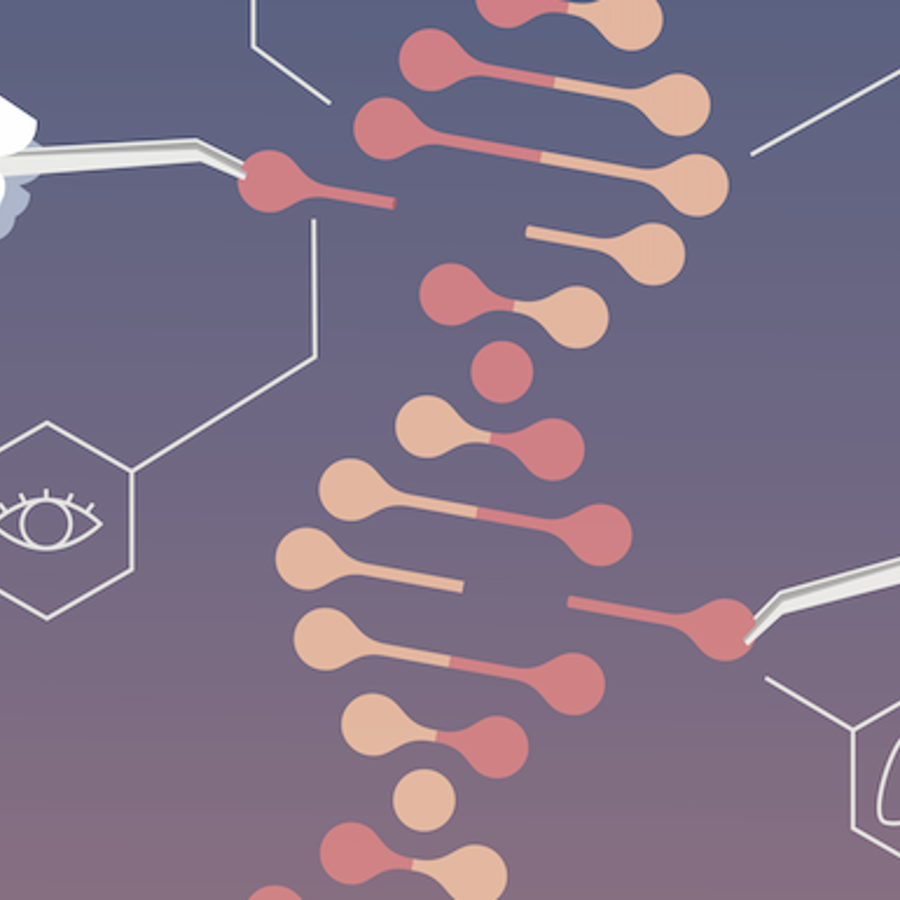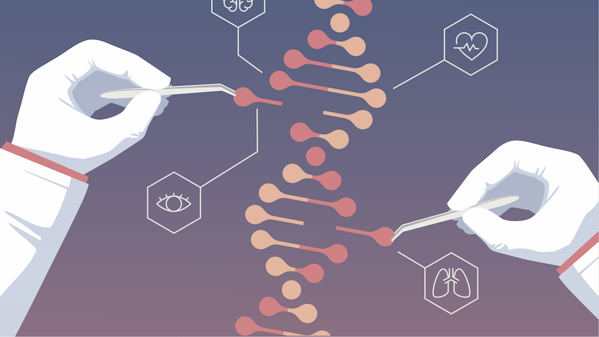
Is it possible to use genetic engineering to create a designer baby?
September 2, 2005

- Related Topics:
- Futuristic science,
- Bioethics,
- Genetic engineering
A curious adult from Alabama asks:
"Is it possible to use genetic engineering to create a designer baby?
I've seen news articles with phrases like, soon, parents could order up a blue-eyed, blonde-haired girl who's good at tennis. Is it technically possible to alter a human embryo to produce a desired trait, such as blue eyes, if neither parent carries genes for blue eyes? Or, for example, if both parents are carriers of cystic fibrosis, and all of their embryos were found to have or carry CF, could the CF gene be fixed in the embryo?"
No, none of this is possible right now. And I don't see it happening anytime soon either.
Let's look at one of your examples to see why. The easiest of what you suggest is to fix a bad cystic fibrosis (CF) gene in an embryo.
Genetic engineering and Cystic fibrosis
We understand that CF happens when something is wrong with a single gene, CFTR.
What makes this an especially easy case is that as long as you have one working copy of CFTR, you won't have the disease. (Remember, we have two copies of most of our genes -- one from mom and one from dad.) In other words, we only need to fix one copy.
So the problem we are looking at is changing one spot on chromosome 7*. Chromosome 7 is 171,000,000 letters long. The CFTR gene is about 70,000,000 letters (base pairs) away from the end.
It is important to realize that this isn't like a very long book or Word document where you can just Control F and then edit. This is an inches long invisibly thin molecule with 171 million letters that we can't see.
Not only that, but this thread is wrapped around millions of little spools all trapped inside the nucleus of the cell. When we try to fix it, we can't unravel it all and splice in the new letters, like type setting or old-fashioned film editing.
We need to break chromosome 7 at just the right place and make the right fix without messing up anything else. Inside the nucleus, without being able to really see the letters.
This is a truly daunting task. We can't do it alone -- we need the help of the cell's own machinery. The most promising work so far is to send in a guided pair of “scissors” for the cell's machinery to use to fix the gene.
But it is only an idea at this point. A good idea, but at a very early stage of development -- no one knows if or how well it will work.
Most likely it will be pretty inefficient, meaning you'll have to try it in lots of embryos. And hope it doesn't change any of the other 6 billion letters in the nucleus.
In my mind, CF is a worthy goal to go after, even with something risky like this. But blue eyes? The risks probably just aren't worth it for something so trivial.

Genetic engineering and eye color
If someone were to try, however, blue eyes might be a little easier because you only need to break a gene. It is always easier to destroy than it is to create.
Blue eyes happen when a part of the iris of the eye lacks the pigment melanin. So if you knock out the gene that makes melanin in the eye, you'll eventually get blue eyes. (In reality there are actually multiple genes involved, but you might get away with only breaking one copy of one of them).
In doing this, you'd want to be careful not to break a different gene or you might cause a genetic disease or cancer. This kind of technology has been used for years in the lab to create “knockout” mice. Even though this hasn't been done yet in humans, the technology is at least well proven in mice.
After all of this, you can imagine how easy it would be to change a bunch of genes all at once. Not very easy at all.
Genetic engineering and complex traits
Yet, that is what you would probably have to do to make a tennis star out of DNA that isn't destined for tennis greatness (like mine, for example). There isn't any way we could pull something like this off now.
First off, we'd need to understand what makes for a good tennis player. We really don't know the answer to this question and there are probably lots of ways for it to happen.
As I said before, we would probably need to change more than one gene. Let's say we really worked hard and got lucky and improved these procedures so that we could change a gene the way we wanted half of the time.
Next, we study the Williams sisters and Andre Agassi and a bunch of other tennis stars and guess that the easiest way to create a tennis star is to change 3 genes. At 50% a gene, the chances of turning someone into a tennis star are around 1 in 8.
What about a blue-eyed, tennis star with no cystic fibrosis? We're talking something like a 3% chance. In other words, only around 1 in 30 embryos will have the changes you want. (It is important to note that this is a scenario that could only happen in the future with drastically improved technology.)

Other ways to get “designer babies”
Given all of this, I think in the near term the most likely way to get a baby with the traits you want will be some sort of selection method. If the child is to be related to you, then you'd need to have the genes of interest in your DNA already.
You could screen the sperm and eggs for the desired traits. This wouldn't be easy for either case.
For the sperm, you'd need some way to tag and sort the ones you wanted. You couldn't do a selection process that destroyed a cell, for example.
For the eggs, one of the trickiest parts would be the numbers you'd have to sort through to find the traits you wanted. The more traits, the more eggs you'd need to screen and women just don't have that many eggs.
If blue eyes are not in either yours or your spouse's gene pool, then maybe in the future you'd go to a frozen embryo catalogue and pick one with the traits you want.
As you can guess from all of this, we aren't talking about the near future here. Even something as "simple" as fixing the CF gene is years or decades away. Blue-eyed tennis stars are even further away. And I won't even get into the ethics of discarding embryos that are"damaged" or don't have the desired traits!
* Of course, the fix you need depends on how the gene is broken.
Our genes are instructions or recipes. When a gene isn't working, something has happened to make the instructions unreadable. Or the meaning has changed so that you end up with something different.
There are lots of ways to mess up an instruction. Extra letters can get added or some can go missing or some letters can change.
Any one of these can happen with cystic fibrosis. So you need to know why the gene has gone wrong.
You then need to add back a letter, change it to the right letter or get rid of an extra one. For the most common form of CF, one called delta 508, we would need to put back the 3 missing letters.

Author: Dr. Barry Starr
Barry served as The Tech Geneticist from 2002-2018. He founded Ask-a-Geneticist, answered thousands of questions submitted by people from all around the world, and oversaw and edited all articles published during his tenure. AAG is part of the Stanford at The Tech program, which brings Stanford scientists to The Tech to answer questions for this site, as well as to run science activities with visitors at The Tech Interactive in downtown San Jose.
 Skip Navigation
Skip Navigation
